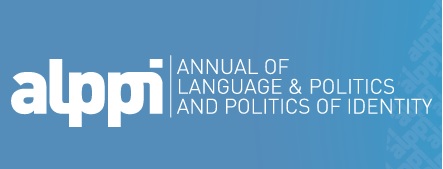Identities of Central European States in terms of Formation of Security Environment
Identities of Central European States in terms of Formation of Security Environment
Author(s): Jaroslav Ušiak, Jana LasicováSubject(s): Political Philosophy, Sociology of Culture, Politics and Identity
Published by: Univerzita Karlova v Praze, Fakulta sociálních věd
Keywords: Central Europe; State-related Identity; Security Environment; State; National Security;
Summary/Abstract: National identities of the states of Central Europe evolved in several historically delimited phases. The states were a part of empires, later they were integrated into a socialist bloc, and on the threshold of the 21st century, they gained inde-pendence and thereby a new identity. In our view, identity is one of the key factors that influence the formation of a security environment. We will examine identity from the point of several analytical perspectives, e.g. philosophical, historical, political and maybe also cultural, in the delimited historical phases that caused the change of identity in the states of Central Europe. In the article we will try to define the basic framework for each analysed identity. This will create the limits on the basis of which we will analyse the position of states in a concrete security environment (NATO and the EU, eventu-ally also the Warsaw Pact or former alliances that the states of Central Europe were a part of in the analysed period). In this sense, we can refer to these states in connection with several types of identities: primordial, collective or institution-al/constructive, forced or voluntarily shared (but also the voluntarily accepted identity on the basis of party system, re-spectively dissident as well as collaboration identity, i.e. identity which collaborated with the opposite of primordial iden-tity in order to maintain the position of a state, respectively of a nation within a state). All historical types of identities participate in the formation of a security environment of a different type. Thus, they determined on a large scale the active structure of rational behaviour of a nation/state. It is therefore necessary to identify the mutual consistencies and differ-ences between the concerned parties, and this may contribute to collective cooperation. The aim of the article is to determine and delimit by means of historical analysis and comparison the listed types of identities in the states of Cen-tral Europe and the integration of their partial segments to the present time. The initial premise is based on the assump-tion that the substance of contemporary identity can be understood as reproduction of positive elements from the past. We will analyse the genesis of every identity, the influence on the formation of socio-political changes, positive and neg-ative factors introduced by this identity, as well as the threats and risks provoked or reflected by a particular identity within a society, and how this particular identity affected the escalation, securitization or desecuritization of threats. The given concretization is reflected in the ability of the states to create a stable security environment in this region.
Journal: ALPPI Annual of Language & Politics and Politics of Identity
- Issue Year: X/2016
- Issue No: Spec.
- Page Range: 45-59
- Page Count: 15
- Language: English

